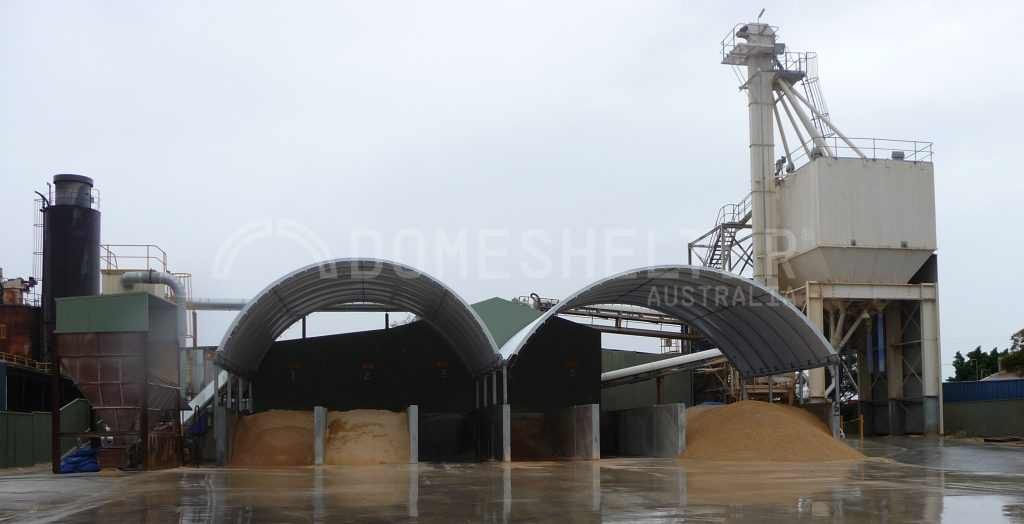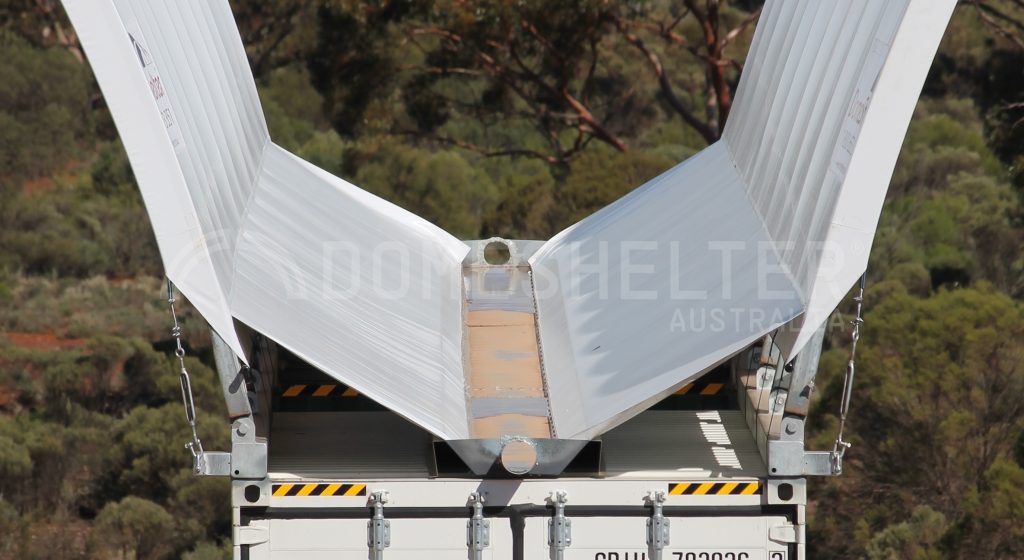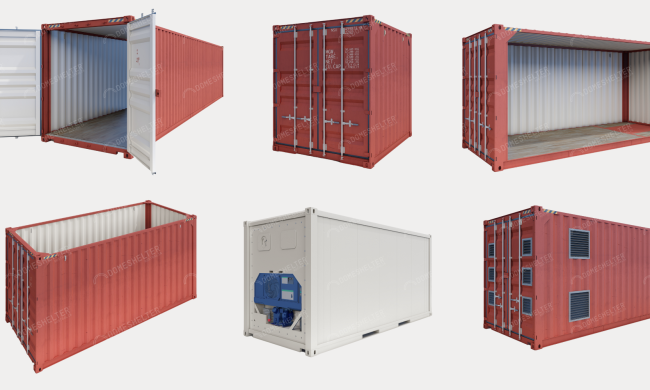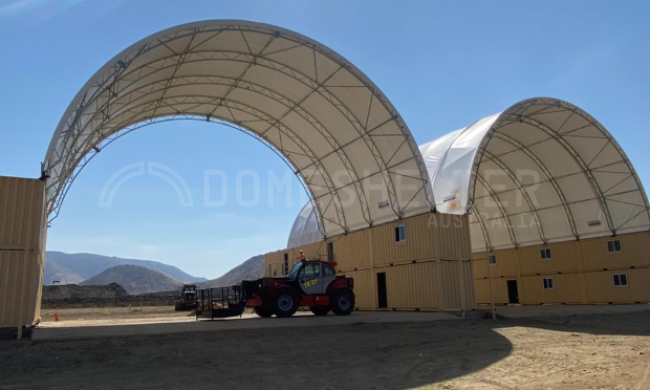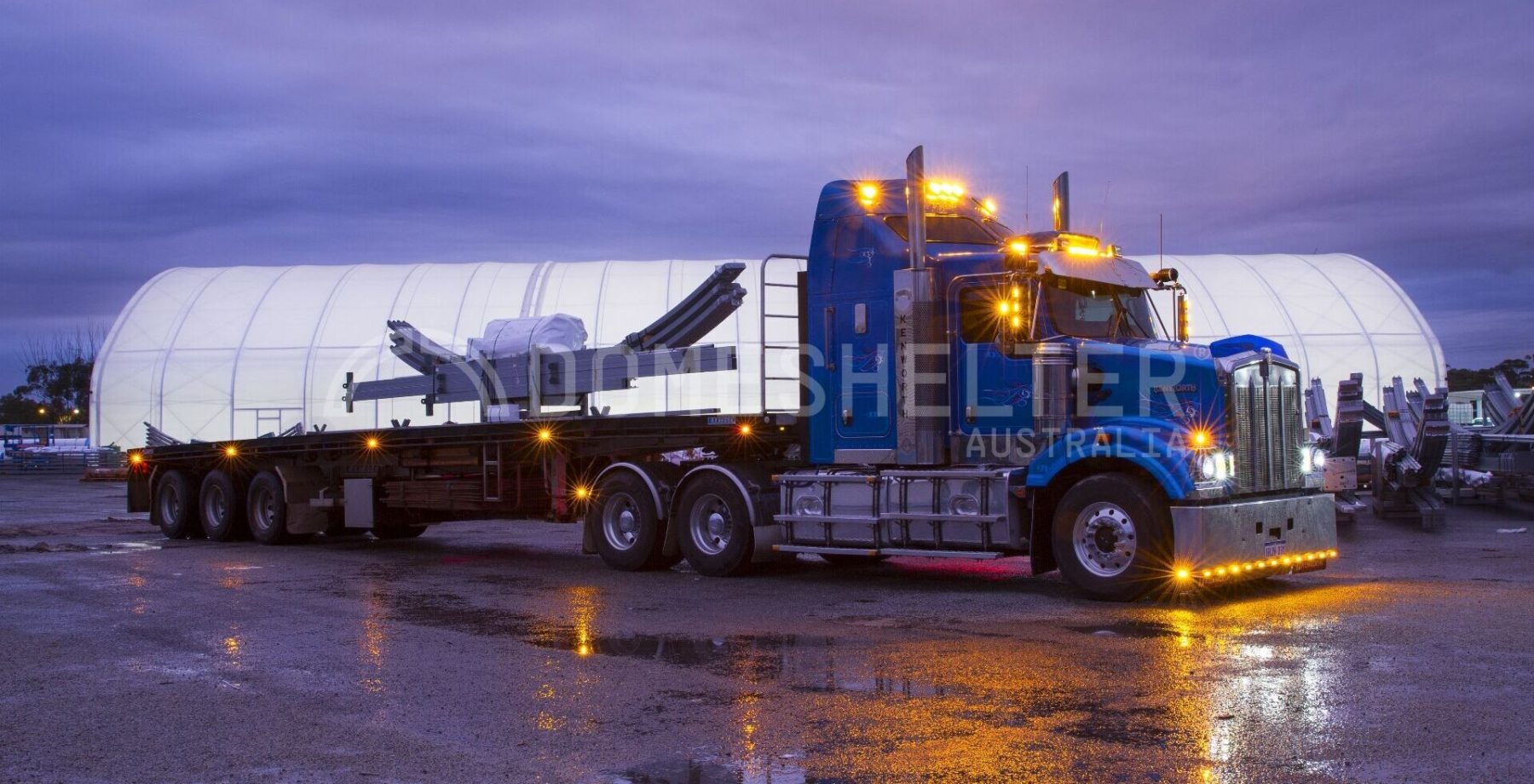
Fabric Shelters have become increasingly popular across a range of industries, providing a versatile and cost-effective Shelter Solution for various needs. These structures, constructed using steel and heavy-duty Fabric Tarp, offer protection and coverage for equipment, materials, staff, and more.
For companies aiming to keep their people and assets as best protected as possible, a crucial question sometimes arises: How well do these Fabric Shelters actually withstand one of the most common weather events, rain?
This is an important consideration, and concerns may be worsened by a lack of understanding about Fabric Shelters or comparisons with lower-durability shelter options like marquees.
In this article, we will discuss concerns about waterproofing Fabric Shelters and explore the central question: Are Fabric Shelters fully waterproof? Understanding the waterproofing capabilities of these Structures is key for industries that depend on reliable protection against rain, moisture, and the potential consequences of water infiltration.
Industries That Rely on Waterproof Shelters
In various industries, protection from moisture and precipitation are critical. Inadequate waterproofing can have serious risks, or even disastrous consequences, so proper focus needs to be taken to ensure this is properly managed.
For example, in a maintenance or fabrication Shelter, equipment or electrical components need to be kept dry at all times; otherwise, damage could be done to the company’s assets, or worse, staff could be put in serious danger. For most bulk storage operations, Storage Shelters need to be fully-sealed, as water could impact the quality and integrity of bulk goods, or even destroy their value.
For these reasons, a completely weatherproof Shelter is a vital line of defence to avoid costly damage and disruption caused by moisture infiltration.
Are Fabric Shelters Fully Waterproof?
In the case of DomeShelter™ Structures, our Armourtex® Fabric Tarp is completely waterproof, with a non-perforated double-scrim and thick coating that ensures no moisture transfer.
Looking at Shelters in their entirety, the topic of waterproofing becomes more complicated, and may necessitate closer analysis. There are areas where specific attention is required to ensure no water is able to enter the Shelter, especially if total waterproofing is an absolute must.
The main area that needs to be addressed is where the roof structure meets the top of sea containers on a Container Mounted Shelter. Due to the corrugated nature of sea containers, water is liable to pool in their roof ridges and stream down the sides in heavy rain. To properly safeguard against this, additional actions are required for a Container Mounted Shelter to be fully waterproof.
Clients may employ a few strategies to seal this area if a completely watertight Shelter is required. These include:
- A strip of tarp or adhesive strip affixed along the join between the container and mounting rail to ensure any gaps are sealed
- An extended roof flap or tropical roof that directs water away from the internal walls of the Shelter
- Silicone-sealing gaps
A Shelter without two Endwalls fully enclosing either end would understandably not be considered waterproof, as if rain were to fall at an angle it would be able to enter the Shelter.
Post and Concrete Mounted Fabric Shelters do not experience the complexities involved with ridged container roofs and are easier to waterproof through side blinds (tarp enclosing the walls of the Shelter down to the ground, in the case of Post Mounted Shelters) and Endwalls.
Sufficient water management through guttering, and regular maintenance to ensure roof tarp is properly tensioned, will further help to ensure no precipitation is able to enter the Shelter.
Choosing a Reputable Supplier for Leak-Proof Fabric Shelters
Ultimately, with the amount of variables involved in ensuring a totally waterproof Fabric Shelter, choosing a reliable and reputable supplier is key.
To ensure your needs are met, it’s worth working with a supplier that has a proven track-record, and experience supplying Fit-For-Purpose, customised Shelter projects. They will have the expertise to advise customers about what may be necessary to waterproof their Shelter.
DomeShelter Australia has nearly 30 years experience in the design, engineering and manufacturing of durable Fabric Shelter Solutions. A Fit-For-Purpose approach leverages this experience to ensure your project is handled on a thorough, case-by-case basis. Countless projects have been delivered where even the strictest needs are met, and the team is well-versed in delivering results for clients who require a waterproof solution.
In Conclusion
Fabric Shelters have revolutionised various industries by providing versatile and cost-effective solutions for Shelter needs. The question of how well these Fabric Shelters withstand rain and moisture is a crucial one, especially for industries that require protection against the potential consequences of water infiltration.
As we’ve explored, Post and Concrete Wall Mounted Shelters are typically easy to waterproof with the use of side blinds and Endwalls. For Container Mounted Shelters, closer attention is needed to ensure the intersection between the mounting rail and sea container is properly sealed.
If total waterproofing is a non-negotiable, working with a reputable Fabric Shelter supplier is paramount. In doing so, you can be sure that you are receiving the best possible solution to ensure your Shelter is completely waterproof, backed by sufficient knowledge and experience.
If you would like more information about the waterproofing capabilities of Fabric Shelters, fill out our contact form to get in touch with a member of the DomeShelter™ Team.




